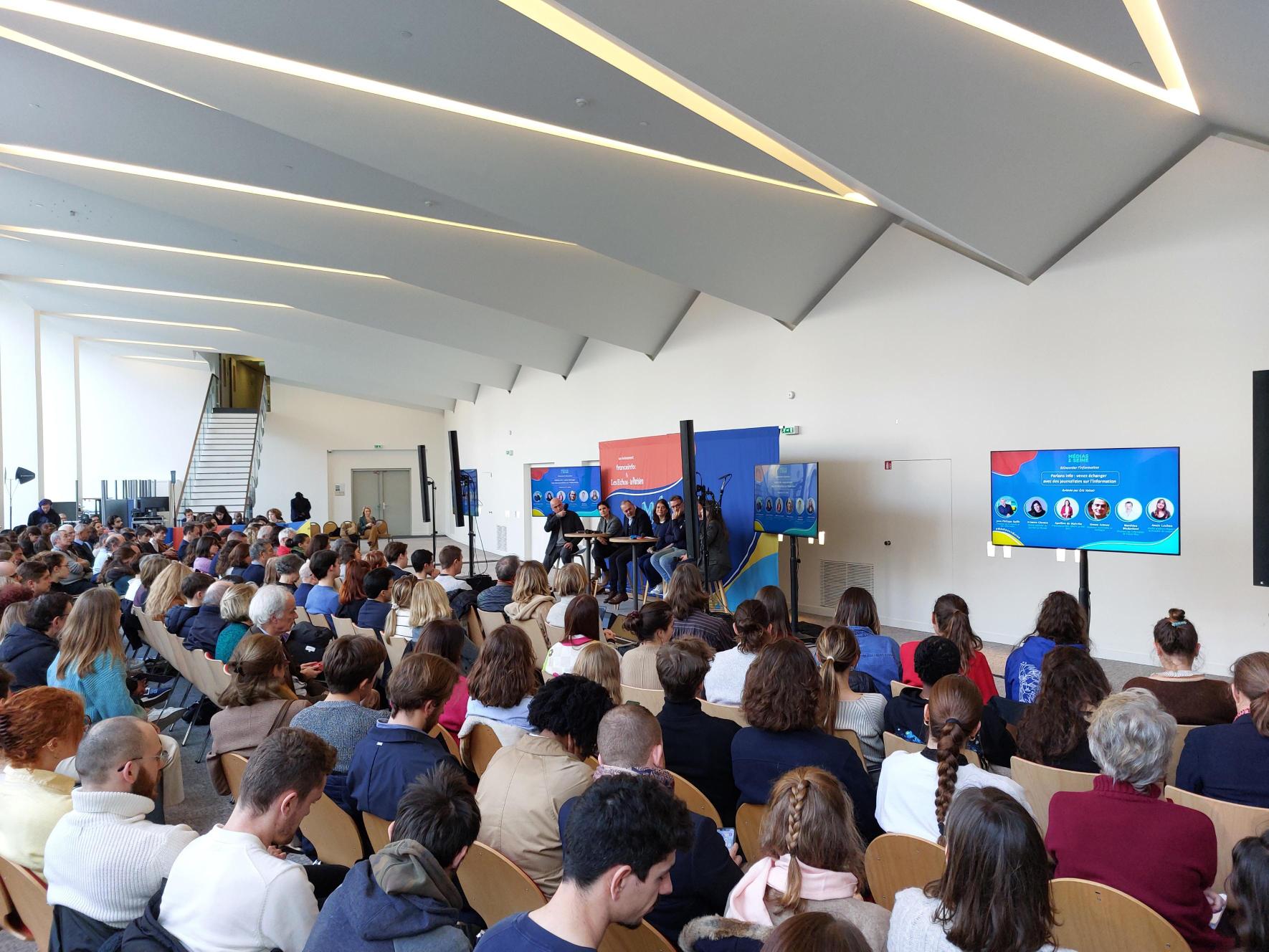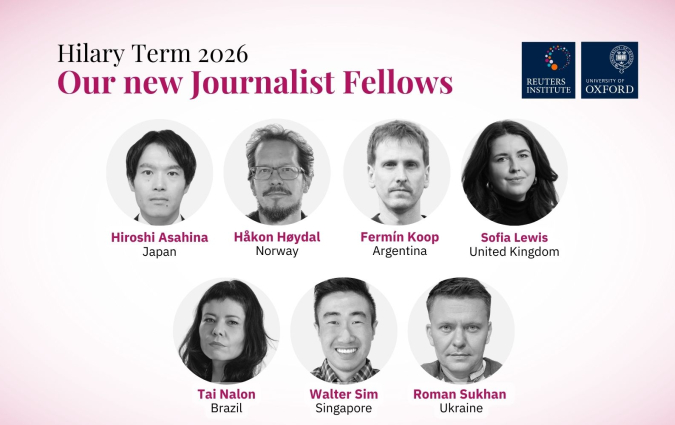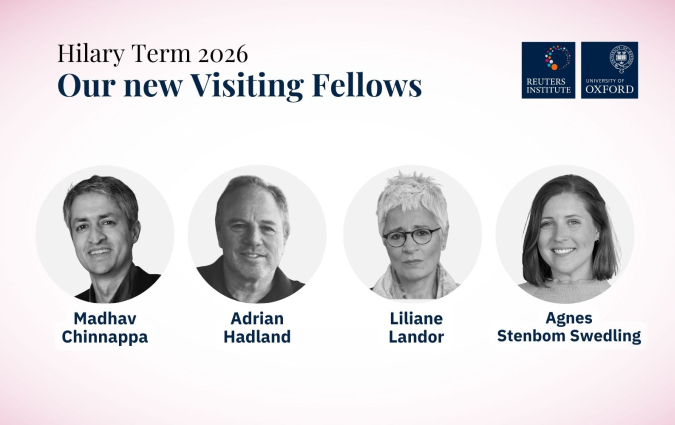Médias en Seine 2023: what we learnt at this annual French festival about the future of news

One of the sessions at Médias en Seine 2023. Credit: Médias en Seine.
On 22 November more than 6,000 people met at the Radio France headquarters in Paris for the 6th edition of the Médias en Seine festival. This year’s edition hosted 200 speakers across 70 sessions and focused on different ways to reinvent information, entertainment and regulation.
The big topics on the agenda were climate journalism and AI’s implications for news. But many niche subjects were also covered, including sports journalism in this session on strategies for covering the 2024 Olympics, innovations in newsletters (here), and how to develop a LinkedIn strategy for news brands (here). Here are five takeaways from the festival (you can find videos for most sessions here):
1. Broadcast archives can be a treasure trove for media organisations.
The Institut National de l'Audiovisuel (INA) is the repository of French radio and television audiovisual archives. In the last few years, it has also become a viral hit in the francophone world, with 1.2 million followers on Instagram and its Youtube videos regularly reaching 1+ million views.
INA’s Deputy Director General, Agnès Chauveau, explained how the organisation has taken advantage of 27 million hours of broadcast radio and television footage to become a relevant player in the French media landscape:
“We started with the [thinking that] all of these audiovisual archives from our past resonate with the present,” she said. “Then we decided we’d use all the platforms available – Instagram, Youtube, Snapchat, Twitch – to resurface this footage from the past in a way that shines a light on what happens in the news today.”
Chauveau discussed how her team carefully curates footage that can speak to current affairs. Two good examples are these interviews on life as a foreign worker in France in 1964 or this tape from 1964 on men’s opinion on the ‘usefulness’ of women for society.
“With our footage, we can bring something to the public debate on current issues that no one else can bring,” she said. “That has become our editorial angle when deciding which footage to post and how to edit it. [As a public institution], part of our mission is to show where we come from as a society – without being nostalgic of the past or judging it.”
- Watch the full session (in French) here.
2. The eyes of the news industry are on the under-25.
Cathinka Rondan, Director of the Norwegian Broadcasting Corporation (NRK) spoke on with our own Nic Newman on a panel on trust in news. She discussed why Scandinavian media see higher trust figures than news organisations in other countries, something that is consistently reflected in our own research. NRK’s secret sauce may be its focus on speaking clearly to young people, a theme that came up in multiple sessions throughout the day.
“At NRK we've been working for years to present the news in a way that a 19-year-old will understand,” said Rondan, who explained this focus on clarity has also helped them increase their viewership in all other age groups.
“The media tends to use a language that can be a bit difficult to connect with,” she said. “Sometimes journalists fear they will lose the trust of the audience if they use a [simpler] language. But what we see is that we’ve increased trust [by doing this]. We’ve increased use, and use and trust are linked.”
- Watch the full session (in English) here.
The festival also hosted Hugo Travers, the 26-year-old Youtube star known for his hugely popular news explainer videos (and 2.6 million subscribers). Travers explained how he and his team have connected with French under-24s and got them interested in news by using innovative social media formats.
He stressed that reaching young people doesn’t necessarily mean digging for so-called young people topics: “There are news stories that are important to cover, and we take a journalistic approach to these topics like any other [traditional] media, while using the specific formats and social codes linked to each social media platform,” he said.
“While our audience is definitely largely young, we don’t make content specifically for young people,” Travers said. “If someone who is 60 stumbles across one of our videos because his granddaughter showed him our channel, the video will still be interesting and relevant to him.”
- Watch the full session (in French) here.
3. Printed products can experiment with new formats too.
Eric Fottorino, former editor-in-chief at Le Monde, spoke about the atypical format of Le 1, the newspaper he co-founded in 2014.
Le 1 is a weekly paper that covers one topic per edition (last week’s edition was on the rise of the far right in France, for instance). It is printed on a single large sheet of paper that folds up three times before reaching a compact A4 format.
Fottorino explained how he and his co-founders thought very deliberately about how the physical format of a printed product influences its content. The idea is that the subject in each issue is covered in increasing depth as you unfold the paper, he said. The outer layer offers a more literary, introductory approach to the topic. The second layer is for analysis and insight from experts. The final, fully unfolded section is where rationality and opinion meet to illustrate the broader theme.
Today, there is a new added value in reading a printed newspaper, Fottorino argued. Not for nostalgia’s sake, but because it offers readers the chance to inform themselves without all the distractions that online news brings.
4. There is progress (and progress to be made) on effective diversity and recruitment policies in the news media.
Louis Dreyfus, Chairman of the Executive Board of the Groupe Le Monde, offered an insightful and honest discussion about Le Monde’s efforts to make the newsroom more diverse. He spoke about his team’s efforts to recruit more trainee journalists from outside the traditional elite journalism schools, and candidly reflected on the successes and limitations of some of the initiatives they have tried.
For instance, he said, we began offering candidates for internships the option to submit a video application from their phones rather than a formal written statement (which often favours students from elite schools) but more than 80% of the applicants still came from the traditional elite schools. He acknowledged the French media still have a long way to go.
? Comment les médias traitent-ils la question des communautés ?
— Médias en Seine (@MediasEnSeine) November 22, 2023
On en parle avec @ldreyfus, président du directoire du Groupe @lemondefr.#MediasEnSeine pic.twitter.com/r58ln0IjAC
5. Media literacy isn’t just for young people.
In a session on the importance of media literacy for the public, Manon Berriche, research assistant for the European De Facto project and doctoral student at SciencesPo Médialab, cited interesting research indicating that young people are actually not the prevalent sharers of fake news on social media. In fact, they don’t share much news online at all. Research suggests it’s actually over-65 who are the most likely to engage with fake news.
Media literacy isn’t just for young people, said Séverine Erhel researcher specialised in the cognitive effects of social media at the University of Rennes 2. Adults also have a responsibility to learn how to identify reliable sources, she stressed.
Grown-ups looking to brush up on these skills could turn to some of the many resources shared in the session by Serge Barbet, Director of CLEMI, the media literacy programme within the French education system. These include a series of videos explaining the basics of news production to the general public and interactive games for young people on investigative reporting methods.
In every email we send you'll find original reporting, evidence-based insights, online seminars and readings curated from 100s of sources - all in 5 minutes.
- Twice a week
- More than 20,000 people receive it
- Unsubscribe any time







